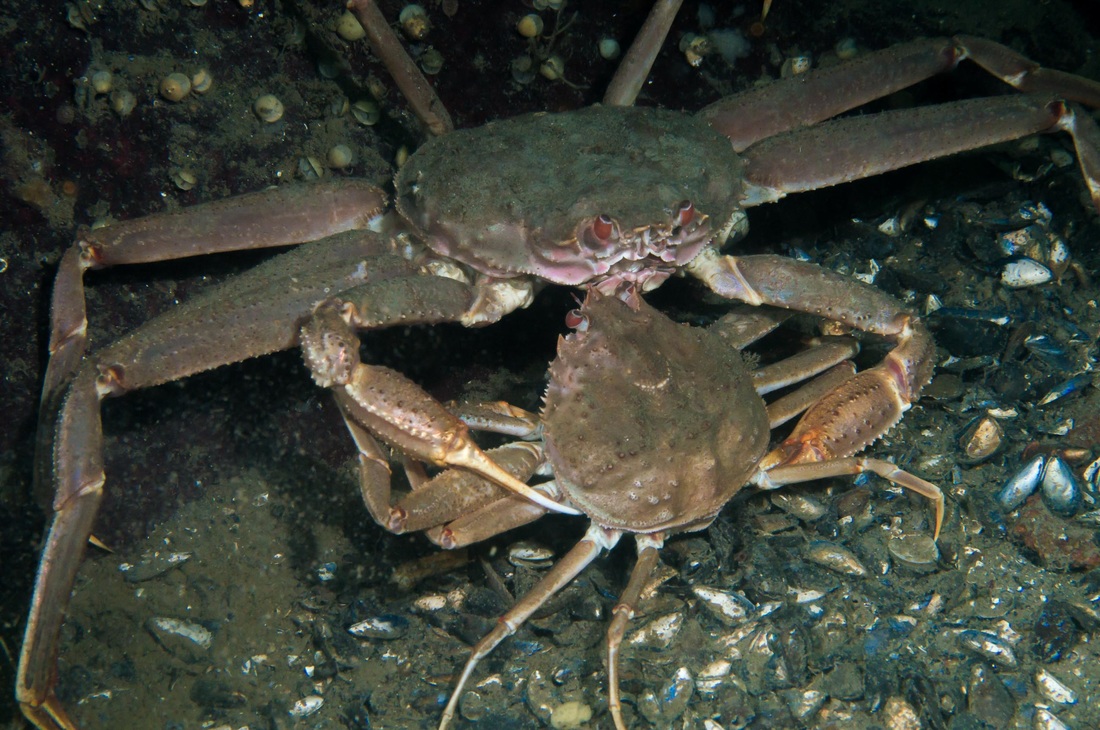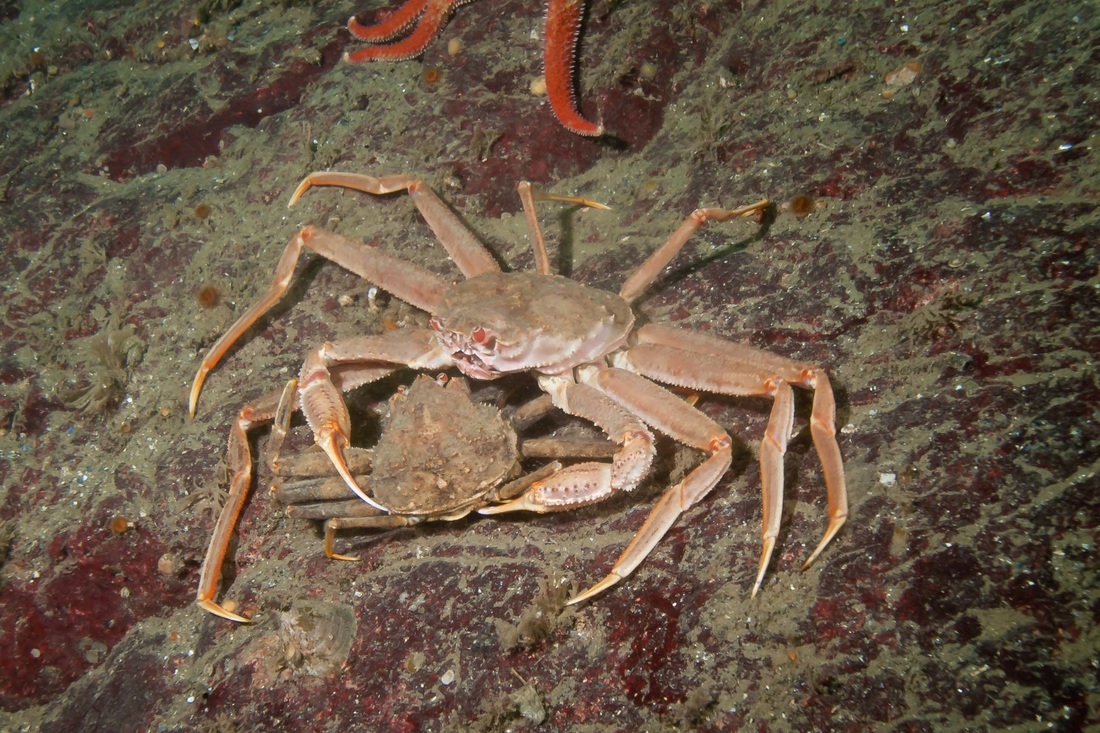Tanner crab, Bairdi tanner crab, snow crab • Chionoecetes bairdi
Identification
The tanner crab can be identified by its long legs contrasting against much shorter claws, which bear thin, curved fingers. The shape of the carapace is almost oval, and is slightly wider than long. This crab is light brown to greenish brown with reddish or pinkish granules or tinges. The eyes are red. The tanner crab's carapace measures up to 14 cm across.
Habitat & Range
This crab inhabits open muddy or sandy bottomed locations in the intertidal and subtidal to 800 m deep, though it is usually at less than 200 m deep. Its range extends from northern Alaska to southern California.
Similar Species
The grooved tanner crab (Chionoecetes tanneri) has a deep groove running down the centre of its carapace. The angled tanner crab
Human Uses
This tanner crab is an important commercial species in Alaska, where it is harvested alongside other tanner crab species. It is also harvested in eastern Canada.
The tanner crab can be identified by its long legs contrasting against much shorter claws, which bear thin, curved fingers. The shape of the carapace is almost oval, and is slightly wider than long. This crab is light brown to greenish brown with reddish or pinkish granules or tinges. The eyes are red. The tanner crab's carapace measures up to 14 cm across.
Habitat & Range
This crab inhabits open muddy or sandy bottomed locations in the intertidal and subtidal to 800 m deep, though it is usually at less than 200 m deep. Its range extends from northern Alaska to southern California.
Similar Species
The grooved tanner crab (Chionoecetes tanneri) has a deep groove running down the centre of its carapace. The angled tanner crab
Human Uses
This tanner crab is an important commercial species in Alaska, where it is harvested alongside other tanner crab species. It is also harvested in eastern Canada.
References
Hart, J. Chionoecetes bairdi Rathbun, 1924. In Klinkenberg, Brian. (Ed.) E-Fauna BC: Electronic Atlas of the Fauna of British Columbia. Lab for Advanced Spatial Analysis, Department of Geography, University of British Columbia, Vancouver. Accessed
Jensen, G.C. (1995). Pacific Coast Crabs and Shrimp. Monterey, CA: Sea Challengers. P. 20.
Lamb, A., and Hanby, B. (2005). Marine Life of the Pacific Northwest [electronic version]. Madeira Park, BC: Harbour Publishing.
Authors and editors of page
Kelly Fretwell (2016).
Hart, J. Chionoecetes bairdi Rathbun, 1924. In Klinkenberg, Brian. (Ed.) E-Fauna BC: Electronic Atlas of the Fauna of British Columbia. Lab for Advanced Spatial Analysis, Department of Geography, University of British Columbia, Vancouver. Accessed
Jensen, G.C. (1995). Pacific Coast Crabs and Shrimp. Monterey, CA: Sea Challengers. P. 20.
Lamb, A., and Hanby, B. (2005). Marine Life of the Pacific Northwest [electronic version]. Madeira Park, BC: Harbour Publishing.
Authors and editors of page
Kelly Fretwell (2016).





